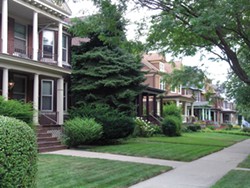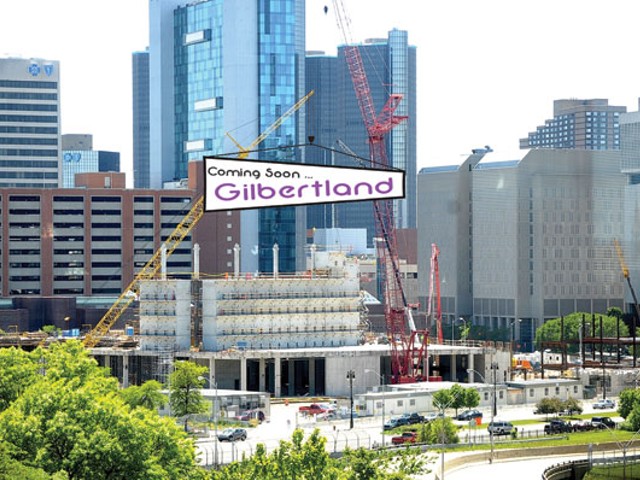Realtor.com had a bold headline in its third quarter Turnaround Towns report released last week: “Detroit, Santa Barbara, Reno Lead Housing Markets’ Rebound,” as the Detroit market led the nation, posting a 44.3 percent year-over-year gain.
On top of the near 50 percent gain in median price, the report noted that Detroit’s available housing stock for sale shrank, with inventory dropping 24.5 percent year-over-year in the last quarter.
“Once the poster child for America’s ailing auto industry, Detroit has turned around its housing markets. Instead of sinking when the city of Detroit had just filed for bankruptcy, its housing markets took on a quiet resurgence,” the report stated. “In the second quarter of this year it ranked seventh in the report, and this rapid jump to number one speaks volumes about its pace of acceleration.”
Realcomp, the Multiple Listing Service for southeast Michigan, provided verification that the numbers weren’t a statistical anomaly; home prices in the Detroit area have been climbing at a strong, double-digit annual rate since last March.
However, Realcomp also qualified that increase by stating indicators show the market’s growth will soon level off.
However, unlike Santa Barbara, Calif. or Reno, Nev., home prices in both the city and suburbs are both low and still down their highs last decade.
According to Realcom, the median selling price for homes in the city of Detroit, Hamtramck and Highland Park was a mere $13,000 in September.
A clearer picture is offered by Standard & Poor’s/Case-Shiller Home Price Index, which released its latest report at the end of October. The good news for homeowners in metro Detroit is home prices were 16 percent higher in August than a year earlier, which posted the region’s 26th consecutive month of positive year-over-year gains.
According to the Case-Shiller report, prices in southeast Michigan — housing stock in Wayne, Oakland, Macomb, Livingston, St. Clair and Lapeer counties — have returned to levels last seen in late summer 2008.
Yet Detroit and the metropolitan area’s home prices are still 27 percent off their late 2005 and early 2006 peak. Of the 20 metro areas in the Case-Shiller index, Detroit is the only region where prices have yet to exceed January 2000 levels.
Lawrence Yun, the National Association of Realtors’ chief economist, said tight inventory is continuing to drive home prices. “There continue to be more buyers than sellers, and that is placing pressure on home prices, with multiple bids common in some areas of the country,” he said.
“Higher interest rates are now causing sales to level out, but the tight supply conditions look to be with us for the balance of the year in most of the country,” Yun explained. “Areas with tighter supplies generally are seeing the strongest price growth.”
Yet, the drumbeat of a rebounding real estate market is not convincing everyone that the trend is sustainable, regardless of shrinking inventory or increased median prices.
Steve Bartley, owner of Advertising That Works, a Bloomfield Township-based company that tracks home sales through issuance of warranty deeds, recently told the Detroit Free Press that he’s dubious of the cheerleading.
“I think prices have shot up too much in the last year, year and a half. I do think that we’re in a mini-bubble right now. But not a big bubble like the old days. From everything I read, the banks still own a substantial amount of homes that they foreclosed on that they haven’t released into the market,” he said. “And if they were to do something like that, the prices of homes would just drop suddenly.”
And the gains also vary by income. On-the-ground reports by realtors in affluent areas like Bloomfield Hills, Northville and Ann Arbor are far more optimistic than in inner-ring suburbs like Hamtramck, Dearborn and Hazel Park.
“The market is super strong,” says Mary Bann, an associate realtor at Re/Max who has listings within the tony Birmingham-Bloomfield market. “It’s a fabulous time to be a seller because there is a shortage of listings right now and prices are going up.”
Agents with listings in more working-class neighborhoods aren’t as upbeat, despite the recent spate of good news. One agent, who requested her name be withheld for fear of upsetting her supervisor, was a bit more morose in her assessment.
“The areas that have money will continue to see increased sales and higher prices,” the real estate agent explained. “But go out of Oakland County and the picture is still pretty bleak despite an uptick. I don’t know if prices will ever reach their highs from 10 to 15 years ago.”
Detroit’s Real Estate Market Sees Rebound
Median price increases lead the nation, but behind the numbers doubts still lingers.
[
{
"name": "GPT - Leaderboard - Inline - Content",
"component": "35519556",
"insertPoint": "5th",
"startingPoint": "3",
"requiredCountToDisplay": "3",
"maxInsertions": 100
}
]






